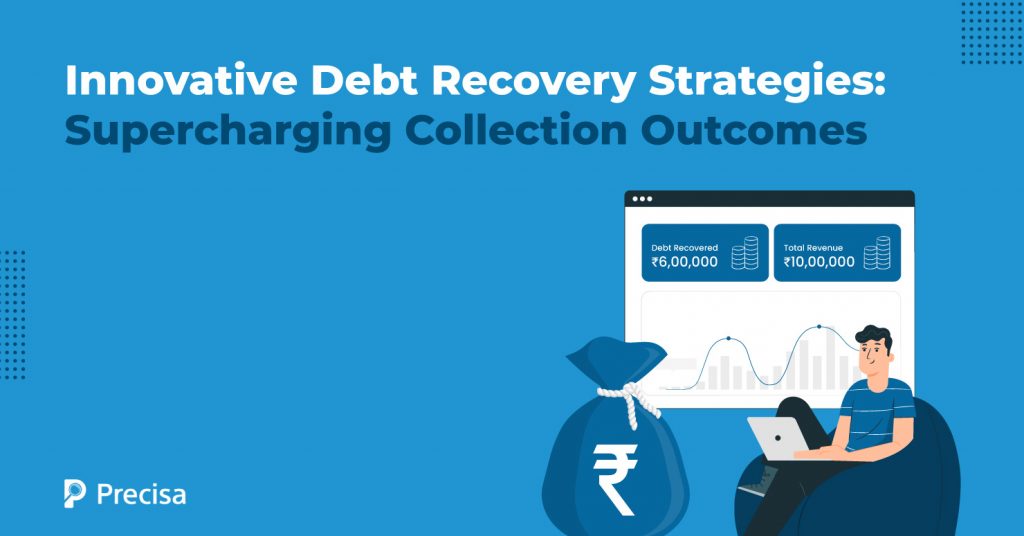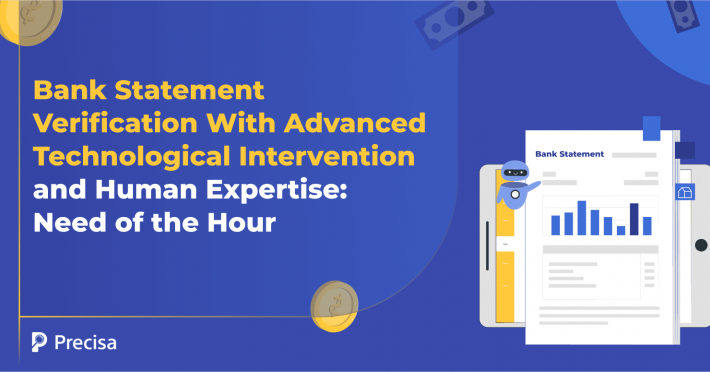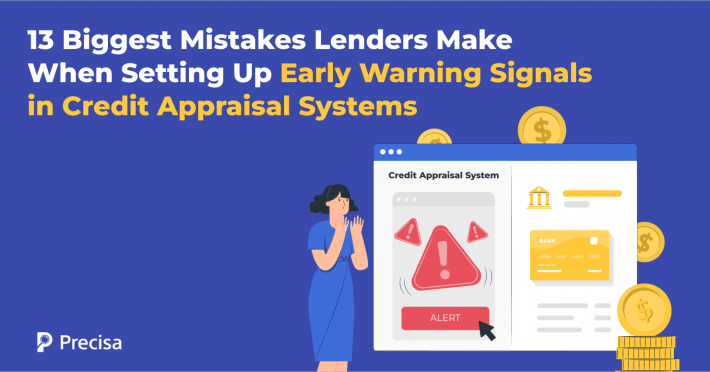Innovative Debt Recovery Strategies: Supercharging Collection Outcomes

The debt recovery function plays an important role in the profitability and sustainability of lender operations. The inability to recover outstanding loan debt can diminish a lender’s finances. Escalation of bad loans can also lead to consequences such as bankruptcy and shutdown for lenders.
The rise of non-performing assets (NPAs), for instance, eats into profitability and prevents lenders from scaling operations. As of the financial year 2022, public sector and private banks in India reported NPAs valued at INR 5.4 trillion and INR 1.8 trillion, respectively.
Today, lenders are focusing extensively on customer acquisition by automating and simplifying the loan application and disbursal process. However, they must have a robust plan to recover loan debt from borrowers.
Putting into effect multiple tech-enabled debt recovery strategies can help lenders ensure that customers repay their loans in a timely, streamlined manner.
Let’s understand current challenges and the solutions to make debt recovery an efficient, sustainable, automated process.
What Are Debt Recovery Strategies?
Debt recovery is the process through which lenders collect money from borrowers who have outstanding loan debt. This scenario arises due to multiple reasons, including temporary cash flow issues, borrower bankruptcy, and cases of fraud.
Debt recovery strategies are a mix of innovative techniques that lenders can leverage throughout the length and breadth of borrower engagement to ensure on-time repayments.
Today, technology is playing an increasingly important role in this process.
Key Debt Recovery Challenges
Traditionally, debt recovery is viewed as a process that begins once a customer stops making timely loan repayments. Lenders outsource this function to an agency that aggressively begins customer follow-ups. This approach results in several outcomes.
1. Low-trust Process
This experience can be unpleasant and trust-eroding for customers who aim to make repayments but may be dealing with cash flow struggles along the way. Businesses need to understand the roadblocks customers face and identify constructive, empowering ways to get back on track with payments.
2. Lack of Borrower Data
Lenders often tend to offer limited support and engagement with borrowers who are struggling with debt payment. This category of customers needs more attention, as they may face genuine challenges that prevent on-time payment. However, the lack of up-to-date customer data is a hurdle.
3. Rigid Loan Structures
Another challenge is that borrowers may be taking on loans that are not optimised for their needs. Lenders tend to offer a one-size-fits-all approach, which results in borrowers overextending themselves by taking on more debt than required.
4. Inaccurate Risk Assessment
Lenders often struggle to assess the risk profile of potential borrowers accurately. Hence, potentially low-risk borrowers with positive cash flows may be turned away due to a lack of history.
On the other hand, lenders may be too quick to offer loan approvals to a business with a positive credit history but are experiencing cash flow issues.
Debt recovery strategies must be viewed as a collective process, which begins from the time a borrower applies for a loan.
Top Debt Recovery Strategies

When these seven strategies are implemented efficiently and with the support of the right technology, they collectively help raise the percentage of loans settled promptly.
1. Accurate Risk Assessment
Many lenders still leverage manual interventions to analyse the creditworthiness of borrowers. As the scale of lending increases, lenders can benefit from adopting cloud-based (Artificial Intelligence) AI-powered underwriting tools, which enable superior financial analysis.
A superior financial analysis software solution, for instance, can extract data from several document formats, categorise all transactions, and analyse financial habits in detail.
The software delivers its data-driven creditworthiness score within minutes, thus enabling accurate underwriting decisions. Based on current and historical data, lenders can predict a customer’s repayment behaviour in the future.
2. Effective Communication of Repayment Terms
Loan repayment terms and conditions tend to use a lot of jargon, thus confusing customers about the loan repayment schedule. Lenders must make communication more effective.
For instance, clear communication of the entire repayment timeline, from the first EMI to the last, including late fees, penalties, and extra interest, nudges borrowers to plan their cash flows more strategically.
3. Customised Repayment Plans
Another smart strategy is to bring flexibility to the loan repayment scheme. Say a borrower is unable to make payments for some months due to a sudden job loss or hospitalisation.
Lenders must have a mechanism that offers some leeway to make partial payments for some time and then increase the EMI value once the circumstances improve. Such steps demonstrate good faith in the customer. They can grow customer loyalty for future credit products.
4. Flexibility on Payment Options
Borrowers tend to have a wide range of preferences when it comes to loan repayments. These include credit cards, debit cards, net banking, cheques, UPI apps, and digital wallets.
By enabling a wide range of payment options, lenders bring convenience to the payment process, elevate the user experience, and make it easy for customers to make payments on time.
5. Bring Efficiency to Debt Recovery Process
Calling loan repayment defaulters to remind them of payments is a common practice. However, many lenders do not have an efficient system that equips callers with updated, individual user data.
For instance, calling executives may bombard borrowers with calls and follow a standardised script.
This approach can prove especially frustrating for borrowers who are making payments on time. AI-powered borrower analytics can provide debt recovery teams with personalised borrower repayment history. Communication can then be tailored to the needs of individual situations.
6. Customised Reminders
Payment reminders, similarly, can be tailored according to the specific details of a borrower’s repayment schedule. Sending mass-produced, generic reminders is not effective in letting customers know when and how much they need to pay.
Leveraging the benefits of automation and AI tools can help lenders craft personalised, relevant communication, while automating this activity end-to-end as they scale.
7. Reward Early Payments
While lenders earn interest when customers default on the payment schedule, debt recovery can be a time-consuming and expensive function. On the other hand, on-time and early payments are valuable borrower behaviour for any lender.
Introducing incentives, such as rewards, discounts, or enhanced credit terms, can encourage borrowers to pay in advance of the due date. This strategy also nurtures brand loyalty and drives more business from existing customers.
Key Takeaway
Continued investment in debt recovery strategies can help lending businesses fix key challenges and reduce outstanding loan debt.
As the percentage of borrowers who honour their loan repayments increases, lenders can refocus their energies on offering innovative, diverse, customised products. They can drive revenues, capture more market share, and grow profitability.
Presica’s comprehensive and seamless financial data analysis solution simplifies and speeds up the process through automation. The software provides actionable insights on a customisable dashboard, thus helping companies make informed business decisions.
Request a free demo today!



